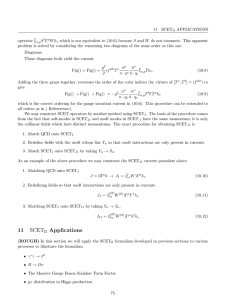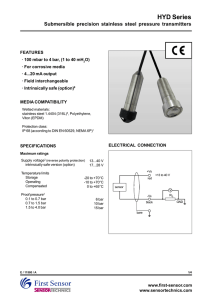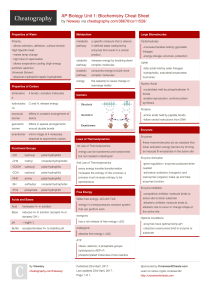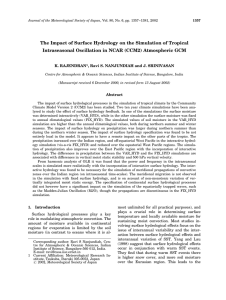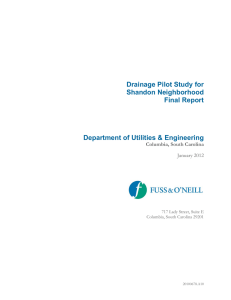2D
advertisement
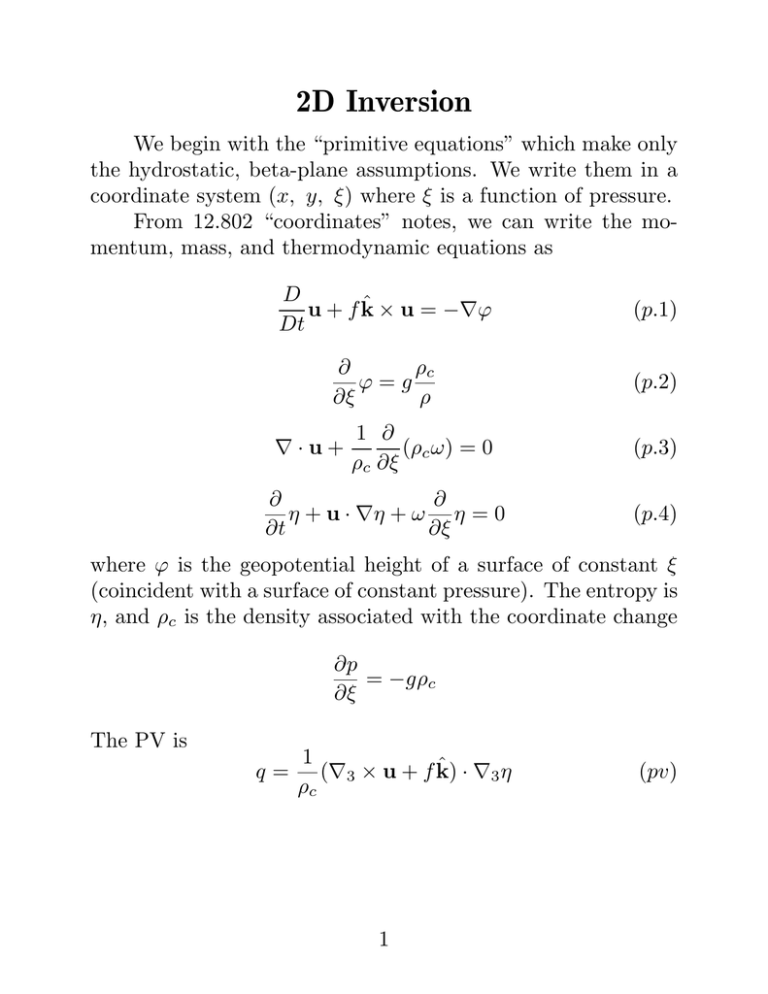
2D Inversion We begin with the “primitive equations” which make only the hydrostatic, beta-plane assumptions. We write them in a coordinate system (x, y, ξ) where ξ is a function of pressure. From 12.802 “coordinates” notes, we can write the mo­ mentum, mass, and thermodynamic equations as D u + f k̂ × u = −∇ϕ Dt (p.1) ∂ ρc ϕ=g ρ ∂ξ (p.2) ∇·u+ 1 ∂ (ρc ω) = 0 ρc ∂ξ ∂ ∂ η + u · ∇η + ω η = 0 ∂t ∂ξ (p.3) (p.4) where ϕ is the geopotential height of a surface of constant ξ (coincident with a surface of constant pressure). The entropy is η, and ρc is the density associated with the coordinate change ∂p = −gρc ∂ξ The PV is q = 1 (∇3 × u + f k̂) · ∇3 η ρc 1 (pv) Ocean form: In the Boussinesq approximation, ρ = ρ0 (1 + σ), ρc = ρ0 and we simply use η ∝ −σ. Then ∂ φ = −gσ ∂ξ (oc − hyd) and q = −(∇3 × u + f k̂) · ∇3 σ (oc − pv) Atmospheric form: Here we choose ξ so that ρc /ρ = θ/θ0 . Using the relation­ ship between θ, ρ, p θ = θ0 � ρ ρ0 �−1 � � we have ξ = Hs Then γ−1 1− γ � p p0 p p0 �1/γ q �(γ−1)/γ � ∂ θ φ=g ∂ξ θ0 q= 1 (∇3 × u + f k̂) · ∇3 θ θ0 2 (atm − hyd) (atm − pv) 2D forms Now we assume the fields are independent of x. Then q = (f − ∂u ∂b ∂u ∂b ) + ∂y ∂z ∂z ∂y (where we’ve used the buoyancy b for either −σ or θ/θ0 and z � for ξ). Using the geostrophic equation f u = − ∂φ ∂y and hydro­ �z 2 � static equation b = ∂φ , where b = N + b , gives ∂z ∂ 2 φ N 2 ∂ 2 φ 1 ∂ 2 φ ∂ 2 φ 1 2 q = fN + f + + − ∂z 2 f ∂y 2 f ∂y 2 ∂z 2 f � ∂ 2 φ ∂y∂z �2 This is the form we wish to invert for φ and therefore u and b . As a basically elliptic equation, we need to specify condi­ tions on the four boundaries of the domain. On the top and � bottom, we specify b = ∂φ ∂z ; on the left and right, we have a number of choices – and they do matter. 3 MIT OpenCourseWare http://ocw.mit.edu 12.804 Large-scale Flow Dynamics Lab Fall 2009 For information about citing these materials or our Terms of Use, visit: http://ocw.mit.edu/terms.

